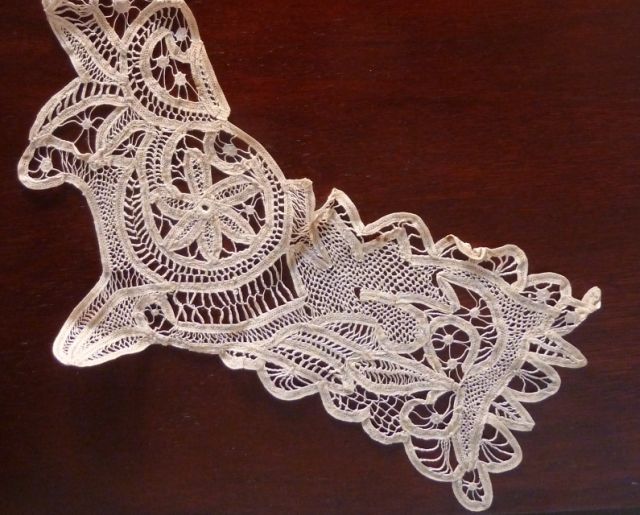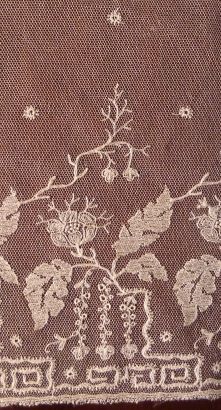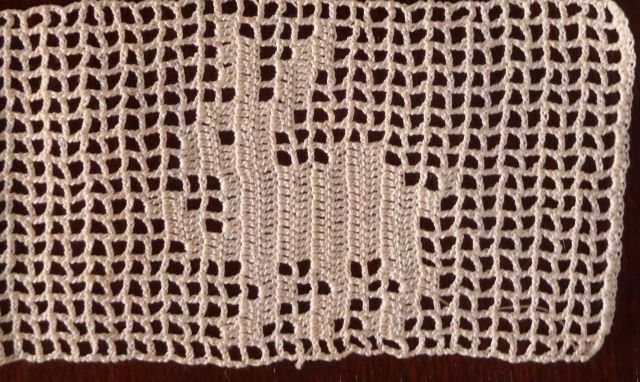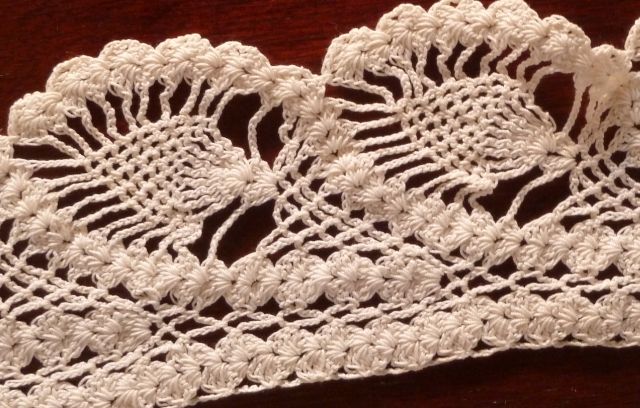The power was out a couple of weeks ago for an entire afternoon. I came home to make myself lunch, but since it was daylight outside, I did not notice until I put something in the microwave and pressed start. No beep. No hum.
Then I felt it — an overwhelming sense of powerlessness. No lights, no heat, no refrigerator, no computer, no TV. No ability to charge my cellphone. My God, I wondered, what did people used to do?
Actually, due to my extensive research on the 19th century, I have a vague idea of what people did do. Handwork. That’s right. Arts and crafts.
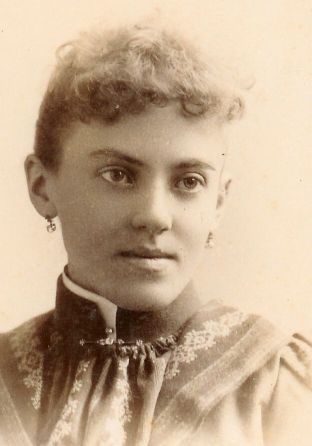 My grandmother, born in 1891, used to love to show me her lace collection. It made only a slight impression at the time. I mean, when I was growing up in the 1970s, lace was machine made, cheap and plentiful. But in the old days, lace was made by hand, with bobbins and eensy weensy crochet hooks. In my family, Lucy Harm Hoppensack, my grandmother’s mother born in 1865, was legendary for her lace-making. In this picture, she is wearing some of her handwork.
My grandmother, born in 1891, used to love to show me her lace collection. It made only a slight impression at the time. I mean, when I was growing up in the 1970s, lace was machine made, cheap and plentiful. But in the old days, lace was made by hand, with bobbins and eensy weensy crochet hooks. In my family, Lucy Harm Hoppensack, my grandmother’s mother born in 1865, was legendary for her lace-making. In this picture, she is wearing some of her handwork.
My grandmother kept a box of lace in her closet, laces worn on her dresses, and those of her mother and grandmother. At Lace Fairy, I’ve tried to identify types, which range from Burano to Point d’Angleterre to Valenciennes. The stitch work is so tiny, it was not until I examined the photos that I realized the netting is hand twisted, and braided, and crocheted.
When my cousin from Germany came to visit, and to work on translating the letters, she brought me a gift made by her grandmother, who had recently passed away. A handmade lace tablecloth. A more perfect gift could not have been found.


